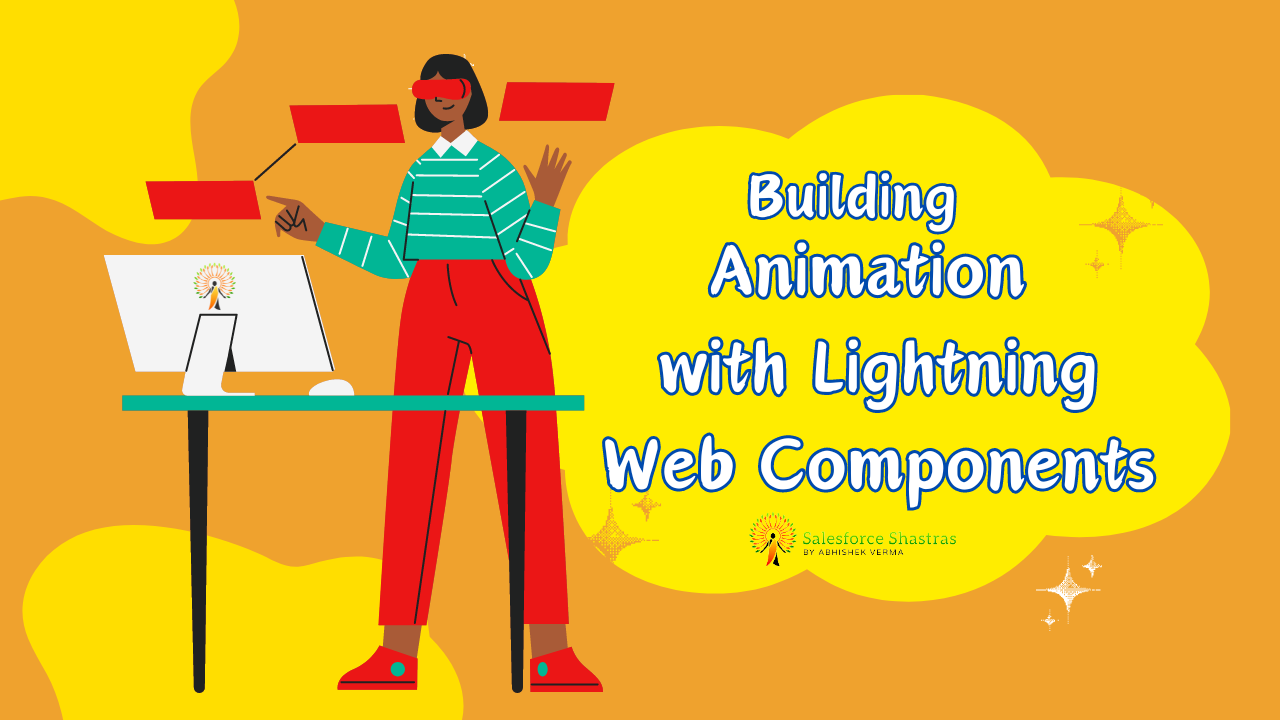Animations play a crucial role in enhancing the user experience of any application. From subtle transitions to eye-catching visual effects, animations captivate users and make the interaction with the application more engaging. In Lightning Web Components (LWC), animations can be easily implemented to create a seamless and dynamic user interface. In this blog post, we will explore the different ways to enhance user experience with Building Animation Lightning Web Components (LWC) and how they can be leveraged to create interactive and immersive applications.
Why Animations Matter in User Experience
Before we dive into the specifics of implementing animations in LWC, let’s take a moment to understand why animations are important for user experience. Animations provide visual cues and feedback to users, making the application more intuitive and user-friendly. They can help guide users through different actions and transitions, improving the overall usability of the application. Here are some key reasons why animations matter in user experience:
- Feedback: Animations can provide immediate feedback to users when they interact with elements on the screen. For example, a subtle animation can indicate that a button has been pressed, visually confirming the user’s action.
- Guidance: Animations can guide users through complex interactions or workflows by highlighting important elements or indicating the next steps. They can make the user’s journey more intuitive and reduce the learning curve.
- Engagement: Well-designed animations can create a sense of delight and engagement for users, making the application more memorable and enjoyable to use. They can captivate users’ attention and encourage them to explore different parts of the application.
With these benefits in mind, let’s explore how we can implement animations in LWC to elevate the user experience of our applications.
Implementing Animations in LWC
LWC provides a robust set of features and tools to implement animations seamlessly. Whether you want to add subtle transitions or create complex visual effects, LWC has got you covered. In this section, we will discuss some key techniques and best practices for implementing animations in LWC.
1. CSS Transitions and Transformations
CSS transitions and transformations are powerful tools for creating smooth and visually appealing animations in LWC. By leveraging the transition and transform properties, we can define the starting and ending states of an element and animate the transition between them. Here’s an example of how to use CSS transitions and transformations in LWC:
/* Define the initial state of the element */
.my-element {
opacity: 0;
transform: scale(0.5);
transition: opacity 0.3s ease, transform 0.3s ease;
}
/* Define the final state of the element */
.my-element.my-animation {
opacity: 1;
transform: scale(1);
}
In the above example, when the my-animation class is added to the my-element component, it will smoothly transition from opacity: 0 and transform: scale(0.5) to opacity: 1 and transform: scale(1) over a duration of 0.3 seconds.
2. LWC Transition Component
LWC provides a built-in lightning:transition component that simplifies the implementation of animations. This component allows us to define different types of animations, such as slide-in, fade, or bounce, with just a few lines of code. Here’s an example of how to use the lightning:transition component in LWC:
<lightning:card>
<lightning:transition animation="slideInUp">
<div class="my-element">Hello, World!</div>
</lightning:transition>
</lightning:card>
In the above example, when the lightning:transition component is rendered, the my-element component will slide into view from the bottom of the screen. We can customize the animation by changing the value of the animation attribute to one of the available options.
3. JavaScript Animations
For more complex animations, we can use JavaScript to manipulate CSS properties and create dynamic effects. LWC provides a powerful framework for working with JavaScript animations, allowing us to control the timing, duration, and easing of animations. Here’s an example of how to implement a JavaScript animation in LWC:
import { LightningElement, api } from 'lwc';
export default class MyComponent extends LightningElement {
@api isVisible = false;
handleClick() {
this.isVisible = !this.isVisible;
const element = this.template.querySelector('.my-element');
if (this.isVisible) {
element.animate([
{ opacity: 0, transform: 'scale(0.5)' },
{ opacity: 1, transform: 'scale(1)' }
], { duration: 300, easing: 'ease' });
} else {
element.animate([
{ opacity: 1, transform: 'scale(1)' },
{ opacity: 0, transform: 'scale(0.5)' }
], { duration: 300, easing: 'ease' });
}
}
}
In the above example, when the user clicks on the component, the isVisible property is toggled, and the animation is triggered using the animate method. The animate method takes an array of keyframes and an options object to define the duration, easing, and other parameters of the animation.
4. Gestures and Interactions
Animations can also be used to enhance gestures and interactions in our LWC applications. For example, we can create animations that respond to touch events or swipe gestures, providing visual feedback and enhancing the overall user experience. LWC provides a set of event handlers, such as ontouchstart, ontouchmove, and ontouchend, that can be used to capture touch events and trigger animations accordingly.
Best Practices for Implementing Animations in LWC
Now that we have explored the different techniques for implementing animations in LWC, let’s discuss some best practices to ensure smooth and performant animations in our applications.
1. Use Hardware Acceleration
To achieve smooth animations, it is recommended to leverage hardware acceleration whenever possible. Hardware acceleration utilizes the device’s GPU (Graphics Processing Unit) to offload the rendering of animations, resulting in better performance and frame rates. When using CSS animations or transformations, make sure to use properties like transform or opacity that are optimized for hardware acceleration.
2. Optimize Performance
Animations can consume a significant amount of CPU resources, especially when dealing with complex or long-duration animations. To optimize performance, consider the following practices:
- Use
requestAnimationFrameinstead ofsetTimeoutorsetIntervalto schedule animations.requestAnimationFramesynchronizes the animation with the browser’s repaint cycle, ensuring smoother playback. - Minimize layout and paint operations during animations. Heavy calculations or frequent style changes can cause jankiness or stuttering in animations. Try to cache values in variables and avoid unnecessary layout changes.
- Avoid animating properties that trigger layout recalculations, such as
width,height, ortop. Instead, use properties liketransformoropacitythat can be handled by the GPU without triggering layout changes.
3. Consider Accessibility
When implementing animations, it is important to consider accessibility and ensure that all users can perceive and interact with the application effectively. Here are some considerations for making animations accessible:
- Provide alternative text or descriptions for animations that convey important information. This is particularly important for users with visual impairments who rely on screen readers.
- Avoid using animations that can cause visual distraction or motion sickness. Some users may be sensitive to certain types of animations, so it’s important to provide options to disable or customize the animations if needed.
- Use animations sparingly and purposefully. Too many animations or excessive use of motion can overwhelm users and detract from the overall user experience.
4. Test on Different Devices and Browsers
To ensure a consistent experience across different devices and browsers, it is crucial to thoroughly test animations on various platforms. Different devices and browsers may have different capabilities and performance characteristics, so it’s important to test animations on a wide range of devices and browsers to identify any performance issues or compatibility issues.
Conclusion
Animations have the power to transform a mundane user interface into one that is visually stunning and engaging. In this blog post, we explored the different techniques and best practices for implementing animations in LWC to enhance the user experience of our applications. From CSS transitions and transformations to JavaScript animations, LWC provides a variety of tools to create seamless and dynamic animations. By following best practices for performance and accessibility, we can ensure that our animations are not only visually appealing but also smooth and accessible for all users.
So go ahead, unleash your creativity, and harness the power of animations in LWC to take your applications to the next level.



